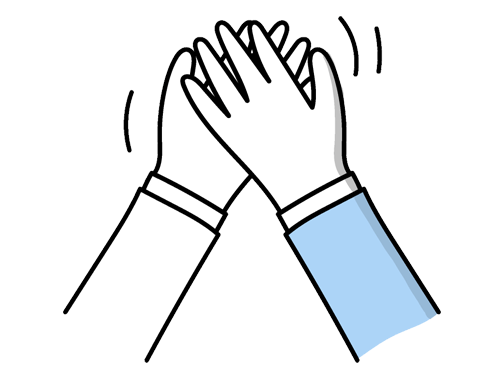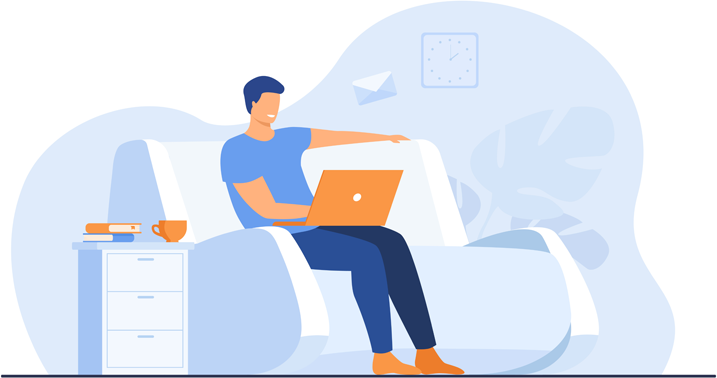Web Accessibility Specialist Interview Questions (2025 Guide)
Find out common Web Accessibility Specialist questions, how to answer, and tips for your next job interview
Practice Interviews Online - Identify your strengths and weakness in a realistic Web Accessibility Specialist mock interview, under 10 minutes
Practice Now »Web Accessibility Specialist Interview Questions
This interview question helps assess your ability to ensure complex forms are usable by everyone, including people with disabilities. You should explain how you identify barriers using proper label associations, reference WCAG guidelines like error identification, and describe testing with real users and assistive technologies to validate accessibility.
Example: When making a complex form accessible, I start by mapping out potential challenges users might face, like unclear labels or keyboard navigation issues. I follow UK accessibility standards, ensuring proper semantic HTML and ARIA attributes. Testing is crucial—I use screen readers and involve real users with disabilities to gather feedback. For example, simplifying error messages and ensuring all fields are reachable by keyboard greatly improves usability for everyone.
This question assesses your ability to handle resistance while advocating for accessibility, ensuring the client’s concerns are heard without compromising standards. You should explain that you would listen carefully to understand their viewpoint, provide clear, evidence-based reasons for your recommendations, and work together to find practical solutions that uphold accessibility.
Example: If a client questions my accessibility advice, I first listen carefully to their viewpoint to understand any concerns. Then, I share clear examples and data showing how the recommendations improve usability and comply with standards. I’m open to discussing adjustments that still meet accessibility goals—like tweaking design elements without losing functionality—to ensure we find a practical balance that respects both their needs and inclusivity.
This question assesses your problem-solving skills and adaptability when facing unfamiliar accessibility challenges. You need to explain that you would research relevant guidelines, consult expert resources, test thoroughly, and collaborate with others to ensure a comprehensive and effective solution.
Example: If I come across an unfamiliar accessibility issue, I’d start by researching the specific barrier and relevant guidelines, like WCAG. Then, I’d test different solutions, perhaps consulting experts or user feedback to ensure effectiveness. For example, when faced with a complex ARIA role problem, I collaborated with developers and users to find a practical fix that improved screen reader navigation. Staying curious and methodical helps me tackle new challenges confidently.
Questions like this assess your understanding of making dynamic content usable for assistive technologies. You should explain using ARIA live regions to notify screen readers of updates, managing focus changes to guide users properly, and testing with screen readers and tools to ensure accessibility.
Example: When dealing with dynamic content, I make sure updates are announced to assistive technologies by implementing live regions, so screen reader users aren’t left unaware. I also manage keyboard focus carefully, ensuring users aren’t lost when content changes. To confirm accessibility, I test with screen readers and automated tools, which helps catch any issues early and ensures a smooth, inclusive experience for everyone.
What they want to understand is how you identify accessibility issues and implement practical solutions to create inclusive user experiences. You need to explain a specific problem you found, how you fixed it, and the positive impact your changes had on users with disabilities.
Example: In a previous role, I audited a company’s website and identified several keyboard navigation issues. I worked closely with developers to implement proper focus indicators and ARIA roles, which greatly improved usability for screen reader users. By also revising colour contrast and alt text across key pages, we made the site more inclusive without disrupting the overall design. It was rewarding to see engagement increase from a wider audience.
Hiring managers ask this question to gauge your knowledge of legal accessibility standards and your practical approach to ensuring websites and digital content meet those requirements. In your answer, clearly explain key Section 508 criteria you’ve applied in projects, describe how you use both automated tools and manual testing to verify compliance, and highlight how you collaborate with teams to maintain accessibility standards continuously.
Example: When ensuring Section 508 compliance, I start by thoroughly understanding its requirements and how they apply to digital content. I use tools like automated scanners alongside manual testing with screen readers to catch issues early. It’s equally important to work closely with designers and developers, offering training and clear guidelines so accessibility becomes part of the everyday workflow. Collaboration and ongoing education help maintain compliance as projects evolve.
This interview question assesses your understanding of the foundational guidelines that ensure websites are usable by everyone, including people with disabilities. You need to explain that the POUR principles—Perceivable, Operable, Understandable, and Robust—are essential because they guide the creation of accessible content that all users can perceive, navigate, comprehend, and interact with across different technologies.
Example: The POUR principles—Perceivable, Operable, Understandable, and Robust—are essential because they ensure websites work for everyone, including people with disabilities. For example, making content perceivable means providing text alternatives for images so screen readers can describe them. Operable interfaces allow users to navigate without a mouse, which benefits keyboard users. These guidelines create a more inclusive experience, helping all users interact with web content effectively and with ease.
Interviewers ask this to see if you understand how accessibility standards evolve to address new technologies and user needs. You need to say that WCAG 2.1 and 2.2 build on 2.0 by adding guidelines for mobile accessibility, low vision, and cognitive disabilities, reflecting ongoing efforts to make web content more inclusive.
Example: Certainly. WCAG 2.0 laid the foundation with core accessibility principles. Version 2.1 expanded on that, especially improving mobile and cognitive accessibility, like better support for touch gestures. The latest, 2.2, builds further by addressing real-world challenges, such as easier focus visibility and improved keyboard interactions. Each update reflects evolving technology and user needs, ensuring websites stay more inclusive over time.
Questions like this assess your ability to communicate the value of accessibility to diverse audiences. You need to explain that web accessibility ensures equal access for all users, including those with disabilities, and highlights legal, ethical, and business benefits.
Example: Web accessibility ensures everyone, including people with disabilities, can use your website easily. It’s not just about compliance, but about reaching a wider audience and improving overall user experience. For example, captions on videos help not only those with hearing loss but also people in noisy places. Embracing accessibility means creating a site that works well for all visitors, which ultimately benefits your brand and boosts engagement.
Employers ask this question to see if you actively promote inclusive design and can influence others to prioritize accessibility. You need to explain a specific situation where you identified accessibility issues, communicated their importance, and successfully pushed for improvements.
Example: In a recent project, I noticed the design overlooked keyboard navigation, which is essential for many users. I gently raised the issue in our team meeting, explaining how it could exclude people with mobility challenges. By collaborating closely with designers and developers, we adapted the design early on, improving usability for everyone without delaying timelines. It was rewarding to see accessibility become a shared priority.
Interviewers ask this to see how you handle real-world obstacles and collaborate to create accessible solutions. You need to describe a specific challenge you faced, explain the steps you took to overcome it, and mention what you learned to improve future projects.
Example: One challenge I often face is balancing design creativity with accessibility standards. For example, ensuring colour contrast without sacrificing brand identity can be tricky. I work closely with designers early on to find solutions that serve both goals. This collaboration not only improves the user experience but also streamlines future projects by embedding accessibility from the start. It’s taught me that communication is key to overcoming these hurdles.
Questions like this assess your understanding of how ARIA improves web accessibility by enhancing semantic meaning and interaction for assistive technologies. You need to explain that ARIA roles define what an element is (like a button or slider), while states and properties describe its current condition or attributes (like disabled or expanded), and give examples showing how using these correctly helps screen readers provide accurate information and improve user navigation.
Example: Sure. ARIA roles define what an element is, like a button or a navigation landmark, helping assistive tech identify its purpose. States are dynamic, showing current conditions such as expanded or disabled. Properties describe fixed characteristics, like a label or hidden status. Together, they ensure users relying on screen readers receive clear, meaningful information, making interactions smoother and more inclusive. For example, marking a dropdown as expanded lets users know it’s open.
This question is designed to assess your practical experience with web accessibility and your problem-solving skills. In your answer, clearly describe the specific accessibility features you implemented, the challenges you overcame, and the positive impact your work had on users with disabilities.
Example: In a recent project for an e-commerce site, I improved keyboard navigation and added ARIA labels to enhance screen reader compatibility. One challenge was ensuring complex interactive elements remained intuitive, which I addressed by collaborating closely with developers. These changes significantly boosted usability for users with disabilities, reflected in positive feedback and an increase in engagement from assistive technology users. It was rewarding to see accessibility truly integrated into the user experience.
This interview question helps the interviewer see if you understand the foundation of accessible web design, which is critical for creating inclusive digital experiences. You need to clearly state the four WCAG principles—Perceivable, Operable, Understandable, and Robust—and briefly explain how they guide accessibility, such as using alt text to make content perceivable, while also noting that WCAG forms the basis of UK accessibility standards.
Example: The four principles of WCAG ensure web content is Perceivable, Operable, Understandable, and Robust. This means everyone can see and hear the information, navigate it easily, make sense of the content, and use it across different devices and technologies. In the UK, these principles form the foundation of accessibility laws, helping organisations create inclusive digital experiences that work for all users, including those with disabilities.
Questions like this assess your practical experience with accessibility testing tools and your ability to apply them effectively in real-world scenarios. You need to mention specific tools you’ve used, explain how you applied them in projects, and show your understanding of both manual and automated testing methods.
Example: In my experience, I’ve used a mix of automated tools like Axe and WAVE to quickly identify common issues, alongside manual checks such as keyboard navigation and screen reader testing with NVDA. For example, while auditing a government website, these combined approaches helped uncover nuanced problems that automated tools missed. This blend ensures a thorough and practical understanding of real user experiences.
Employers ask this to see how you manage limited time while ensuring maximum accessibility impact. You need to explain that you assess issues by user impact, prioritize high-benefit, low-effort fixes first, and clearly communicate these priorities and trade-offs to stakeholders.
Example: When facing tight deadlines, I focus first on fixes that affect the most users or create major barriers, like keyboard navigation or screen reader issues. I balance the effort required against the potential impact, ensuring the biggest wins come first. Clear communication with the team and stakeholders helps manage expectations, so everyone understands why some elements take priority and others may need revisiting later.
Hiring managers ask this question to see if you are proactive about keeping your skills current in a rapidly evolving field. You need to say that you regularly review official resources like WCAG updates and participate in accessibility forums or events, then apply new insights to enhance your work processes and project outcomes.
Example: I regularly follow updates from sources like W3C and the UK Government Digital Service to stay in the loop. I also participate in webinars and accessibility forums to learn from others’ experiences. When I find new techniques or guidelines, I test them out on current projects to see how they can enhance usability. This approach helps me keep my work both current and practical.
What they want to know is how you proactively work with your team to make accessibility a core part of the project from start to finish. You should say you engage in regular workshops with designers and developers, provide clear and practical accessibility guidelines, and collaborate continuously through iterative testing to ensure accessibility is maintained throughout.
Example: I work closely with designers and developers from the start, joining early meetings to highlight accessibility needs and offer practical solutions. By keeping communication clear and approachable, I help the team understand how accessibility benefits everyone. Throughout the project, I provide ongoing feedback—like reviewing prototypes or code—to catch issues early and ensure the final product is inclusive and user-friendly.
Employers ask this to see if you understand how screen readers help identify real user experience issues for people with visual impairments. You need to explain that you use screen readers to navigate websites step-by-step, checking for proper content structure, meaningful alt text, and logical reading order.
Example: When testing with screen readers, I navigate through the site using keyboard shortcuts to experience the content as a user with visual impairments would. I pay attention to how well headings, links, and buttons are announced and check if ARIA labels provide clear context. For example, ensuring form fields properly describe errors helps me identify gaps. This hands-on testing reveals real user challenges beyond automated tools.
Employers ask this to understand your methodical approach and knowledge of accessibility standards in assessing digital content. You should explain how you define the audit scope, select and use tools for both automated and manual testing based on WCAG 2.1 AA standards, and describe how you communicate clear, actionable findings to stakeholders.
Example: Yes, I’ve conducted accessibility audits by first reviewing the site against the WCAG 2.1 guidelines, using tools like WAVE and manual keyboard testing. I document issues clearly, prioritising those impacting user experience most. In one project, this led to improvements in navigation for screen reader users. I then work closely with developers to ensure fixes are implemented effectively and verify changes before sign-off.
What they want to understand is how you approach complex accessibility challenges with creativity and practical solutions that truly improve user experience. You need to clearly describe the problem you identified, the innovative method you used to solve it, and how you measured its effectiveness and learned from the outcome.
Example: In a recent project, I noticed our video player lacked keyboard controls, making it tough for users with mobility challenges. Instead of a typical fix, I collaborated with developers to design custom keyboard shortcuts and clear visual focus indicators. After rolling it out, user feedback showed improved navigation and engagement. This taught me that blending creativity with collaboration can turn accessibility challenges into user-friendly features.
What they want to understand is how you effectively communicated web accessibility concepts to different people and the positive changes that resulted. You need to describe a specific example where you simplified complex guidelines for a non-technical audience and explain how your training improved their accessibility practices.
Example: In a recent project, I held a workshop where I broke down key accessibility principles using real website examples. I tailored the session to the team’s roles—designers focused on visual contrast, developers on keyboard navigation. This hands-on approach helped everyone see how their work impacts users with disabilities. Afterward, the team integrated accessibility checks into their routine, which improved the overall product quality and inclusivity.
What they want to know is how you respond to feedback to improve your accessibility work and collaborate effectively. You need to say that you stay open and positive when receiving criticism, reflect on the input thoughtfully, and give an example of how you adjusted your work to enhance the user experience based on stakeholder feedback.
Example: I welcome feedback as a valuable part of the process. When someone points out issues or offers suggestions, I listen carefully and consider how it can enhance the user experience. For example, after a colleague highlighted a contrast issue on a site, I adjusted the design and tested it with real users. Staying constructive and open keeps the focus on improving accessibility, which benefits everyone in the long run.
This question helps interviewers assess your practical knowledge of accessibility challenges and your problem-solving skills. You need to mention typical issues like poor keyboard navigation and screen reader incompatibility, explain their impact on users with disabilities, and briefly describe solutions such as using proper ARIA roles and semantic HTML.
Example: In my experience, common accessibility challenges include poor keyboard navigation, insufficient color contrast, and missing alt text for images. These issues can make it difficult for users with visual or motor impairments to interact with a site effectively. To address this, I focus on semantic HTML, ensure proper ARIA roles are used, and test with screen readers and real users to create a more inclusive experience.
Hiring managers ask this question to gauge your understanding of the foundational standards guiding accessible web design and your ability to apply them. You need to explain that WCAG provides guidelines to make web content accessible to everyone by following the POUR principles—Perceivable, Operable, Understandable, and Robust—and highlight how adhering to these improves user experience for people with disabilities and helps organizations comply with legal standards.
Example: The WCAG, or Web Content Accessibility Guidelines, sets out how to make web content more accessible to everyone, especially people with disabilities. It’s built around four key ideas: making content perceivable, operable, understandable, and robust. Following these guidelines helps organisations create inclusive experiences—like ensuring screen readers can navigate a site—so no one is left out when accessing information online.
Ace your next Web Accessibility Specialist interview with even more questions and answers
Common Interview Questions To Expect
The interviewer is looking for your motivation, passion, and alignment with the company's values and goals. You can answer by discussing your relevant skills, experience, and how the role fits into your career aspirations.
Example: I am passionate about creating inclusive and accessible digital experiences for all users, which is why I am excited about the opportunity to work as a Web Accessibility Specialist. With my background in web development and knowledge of accessibility standards, I believe I can make a positive impact on the company's digital presence. This role aligns perfectly with my career goal of promoting digital inclusivity and ensuring equal access to information online.
The interviewer is looking for your commitment to ongoing learning and growth in your field. You can answer by mentioning courses, certifications, conferences, or other ways you plan to stay current in web accessibility trends.
Example: I'm always looking to stay up-to-date with the latest trends in web accessibility, so I plan on attending relevant conferences and workshops. I'm also considering pursuing additional certifications to further enhance my skills in this field. Continuous learning is key in a rapidly evolving industry like web accessibility.
The interviewer is looking for examples of how you collaborate with others, communicate effectively, resolve conflicts, and contribute to team success. Be specific and highlight your teamwork skills and experiences.
Example: Sure! In my previous role as a Web Accessibility Specialist, I worked closely with designers, developers, and project managers to ensure that websites were accessible to all users. I regularly participated in team meetings, provided feedback on accessibility issues, and collaborated on solutions to improve user experience. Overall, my teamwork skills have been essential in successfully implementing accessible design practices.
Interviewees can answer by acknowledging a mistake, explaining how they rectified it, and highlighting lessons learned. Interviewers are looking for accountability, problem-solving skills, and ability to learn from mistakes.
Example: Yes, I once overlooked adding alt text to images on a website, which impacted accessibility. I immediately fixed the issue and implemented a checklist to ensure it wouldn't happen again. This experience taught me the importance of thorough testing and attention to detail in web accessibility.
The interviewer is looking for your level of interest in the company and the role, as well as your curiosity and preparedness. Ask about company culture, team dynamics, or specific projects.
Example: I'm really excited about the opportunity to potentially join your team. Can you tell me more about the company culture and how the team collaborates on projects? I'm also curious about any upcoming projects that I could potentially be involved in.
Company Research Tips
The company's website is a treasure trove of information. Look for details about the company's mission, values, culture, and goals. Pay special attention to any sections related to web accessibility, as this is the role you're interviewing for. Check out their blog or news section to get a sense of their recent projects and initiatives. This will give you a sense of what the company prioritizes and how your role might contribute.
Tip: Don't just skim the surface. Dive deep into the website, exploring as many pages as possible to gather comprehensive information.
Social media platforms can provide a wealth of information about a company. Look at their LinkedIn, Twitter, Facebook, and Instagram accounts to understand their brand voice, see how they interact with customers, and get a sense of their company culture. You can also see if they've won any awards or been recognized for their work in web accessibility, which could be a good talking point in your interview.
Tip: Look at the comments and replies to their posts. This can give you insight into how they handle customer service and public relations.
Stay updated with the latest news and trends in the web accessibility field. This will not only show that you're passionate and knowledgeable about your field, but it will also give you a sense of the challenges and opportunities the company might be facing. Websites like TechCrunch, Wired, and the BBC's technology section can be good sources of information.
Tip: Try to relate the latest trends and news back to the company you're interviewing with. This shows that you're able to think strategically about their position in the industry.
Understanding a company's competitors can give you insight into the market they operate in and the unique value they offer. Look at the competitors' websites and social media platforms, and try to understand their strengths and weaknesses. This can help you understand where the company you're interviewing with stands out, and where they might need to improve - both of which are valuable insights for your interview.
Tip: Don't just focus on the negatives of the competitors. Understanding their strengths can help you understand the challenges your potential employer is facing.
What to wear to an Web Accessibility Specialist interview
- Smart casual attire
- Clean, well-fitted jeans or trousers
- Button-down shirt or blouse
- Blazer or cardigan for a polished look
- Closed-toe shoes, clean and polished
- Minimal accessories
- Neat and professional hairstyle
- Light, natural makeup for women
- Avoid flashy colours or prints
- Ensure clothes are ironed and clean
- Carry a professional bag or briefcase





